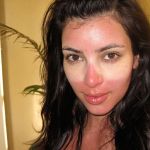
Why getting a sunburn is not cool
A little vademecum for tanning safely

August 11th, 2022
Now that summer and the long-awaited August vacations have (finally) arrived, avoiding sunburn is essential to safeguard the health of our skin. But let's clarify for a moment. Ultraviolet rays are divided into UVA, UVB and UVC: the latter are blocked by the ozone layer, UVB is partially filtered by the atmosphere and clouds, and UVA can pass through even glass. UVA is present all year round and unfortunately can act even in cloudy skies because it reaches our skin even through a glass. Reaching even the dermis, they are one of the main causes of free radical production, responsible for premature photoaging, skin reactivity phenomena and pigmentation disorders. UVBs are much stronger and can cause sunburn, but reducing their intensity can be either a cloudy day or glass-they are basically the ones that determine our skin's reaction with the appearance of a tan but are also responsible for redness and allergic reactions. Yet, sun rays do not only have negative effects, for example, but they are also very important for vitamin D synthesis; proper exposure is enough to get the beneficial effects and-most importantly-protect yourself.
But how do sunscreens work specifically?
Sunscreens and oils contain two different types of filters: physical and chemical. Physical filters act in a mechanical way. They basically reflect and disperse the sun's rays because they contain opaque substances (titanium dioxide, zinc oxide) that act as a "mirror," repelling, without distinction, all radiation. Chemical filters, on the other hand, contain complex organic molecules (oxybenzone, phenylbenzylimidazole, sulfonic acid, butyl methoxidibenzoylmethane, ethyl methoxycinnamate), which absorb the energy of solar radiation and return it in part, in the form of heat. Each of them absorbs a specific wavelength (UvA and UvB). In contrast, photoprotective substances that are taken by mouth, for example, carotenoids, derived from the carrot, act differently. They are deposited in the sebaceous glands and dermis and inhibit oxidation reactions, neutralizing free radicals that are generated during exposure to Uv rays. However, they do not replace the action of filters.
And what does SPF stand for?
SPF stands for "Sun Protection Factor" or sun protection factor. The higher the number indicated on the package, the greater the degree of sun protection. "High" protection is given, for example, by a cream with SPF 30, while a product with SPF 50+ is considered "very high" sun protection. This number indicates the sunscreen product's ability to protect against the aggression of UVB rays, although a very good product should also offer protection against UVA rays. The SPF, then, is an index of the cream's ability to protect our skin from UVB rays, while the abbreviation PPD indicates protection against UVA rays. Therefore, a good product should contain both UVB and UVA protection in order to provide optimal protection against UV rays.
Which cream to choose and how often to spread it?
Learning to read the packaging is very important: once we understand what SPF is, we have seen that it is good to choose a sunscreen that also defends against UVA rays. A fair skin type, will definitely have to choose a very high protection and will have to apply it frequently. The average amount to protect the whole body depends on the person's weight and height, and the cream should be applied at least half an hour before sun exposure. The advice then, is to renew application frequently and profusely to maintain sun protection, especially after sweating or after getting wet or dry. The other watchword is to diversify: the face needs different protection than the rest of the body, just as you will need a higher SPF if you exercise in the sun for several hours. Last but not least, one should also expose oneself to the sun slowly, increasing the time spent in the UV rays slowly: 40 minutes on the first day, one hour between the second and third, until you reach 3-4 hours after 4-5 days. Also take care not to be in the sun during the hottest hours.
nss G-Club has selected for you the 10 perfect sunscreens for safe tanning:






































































